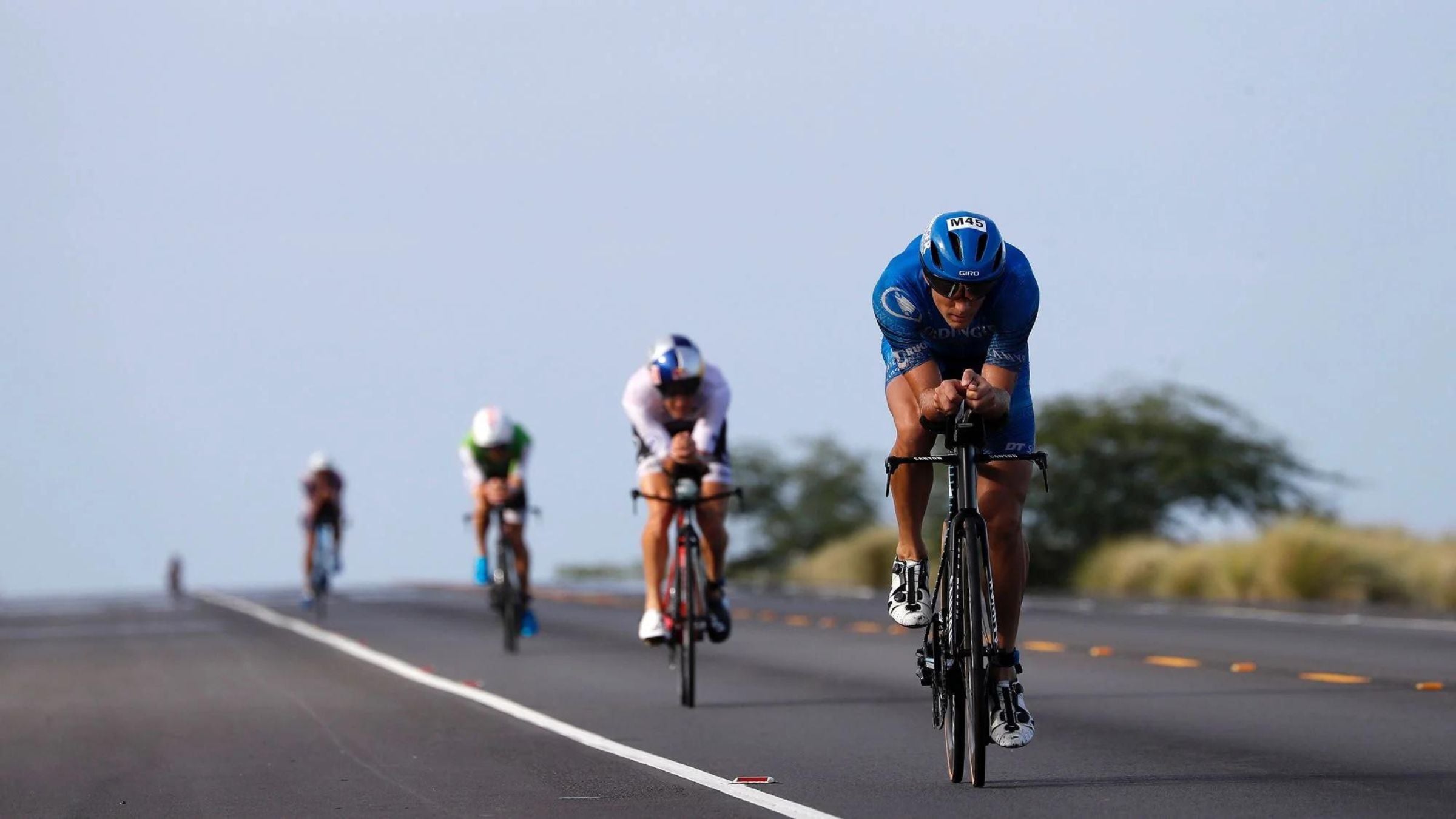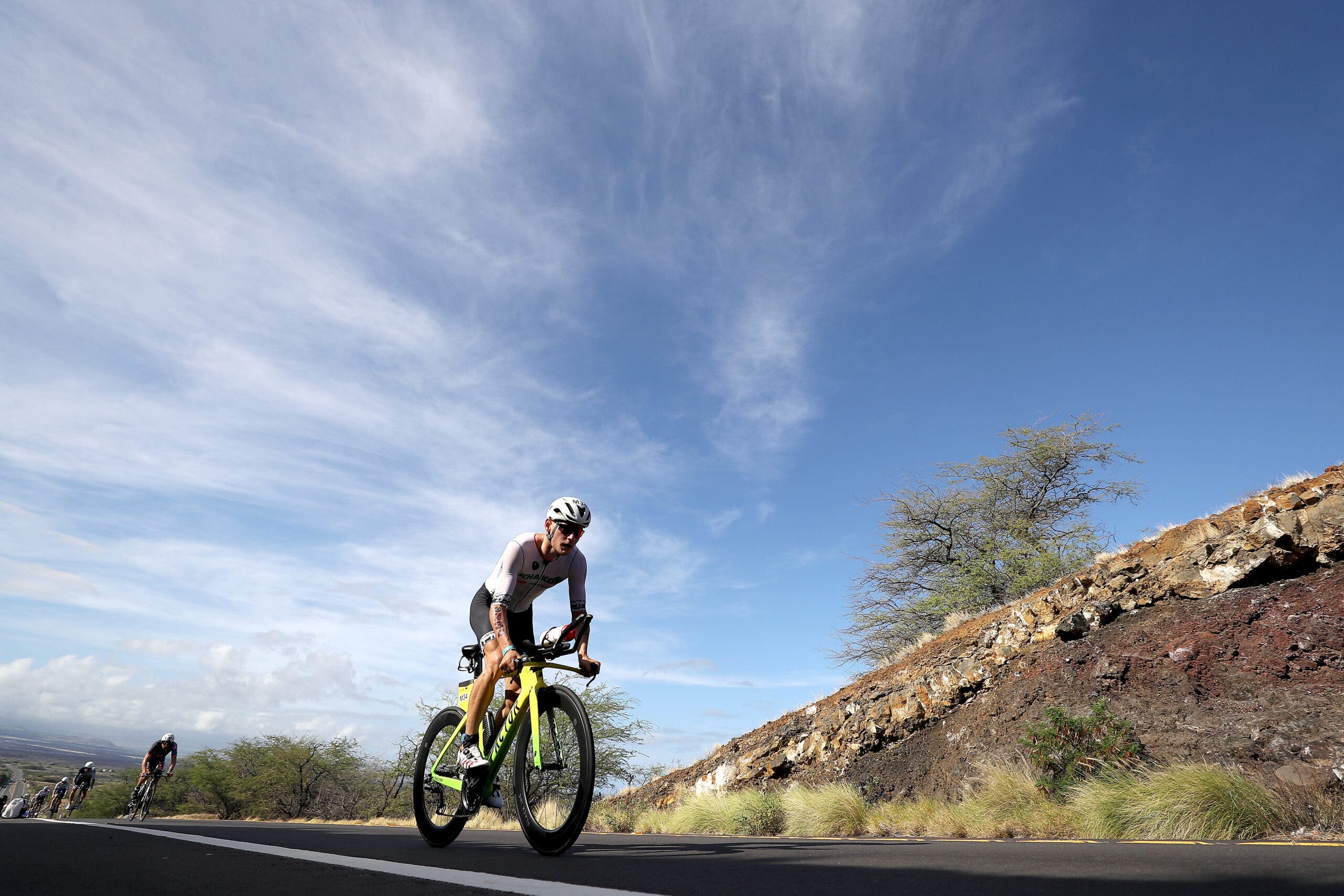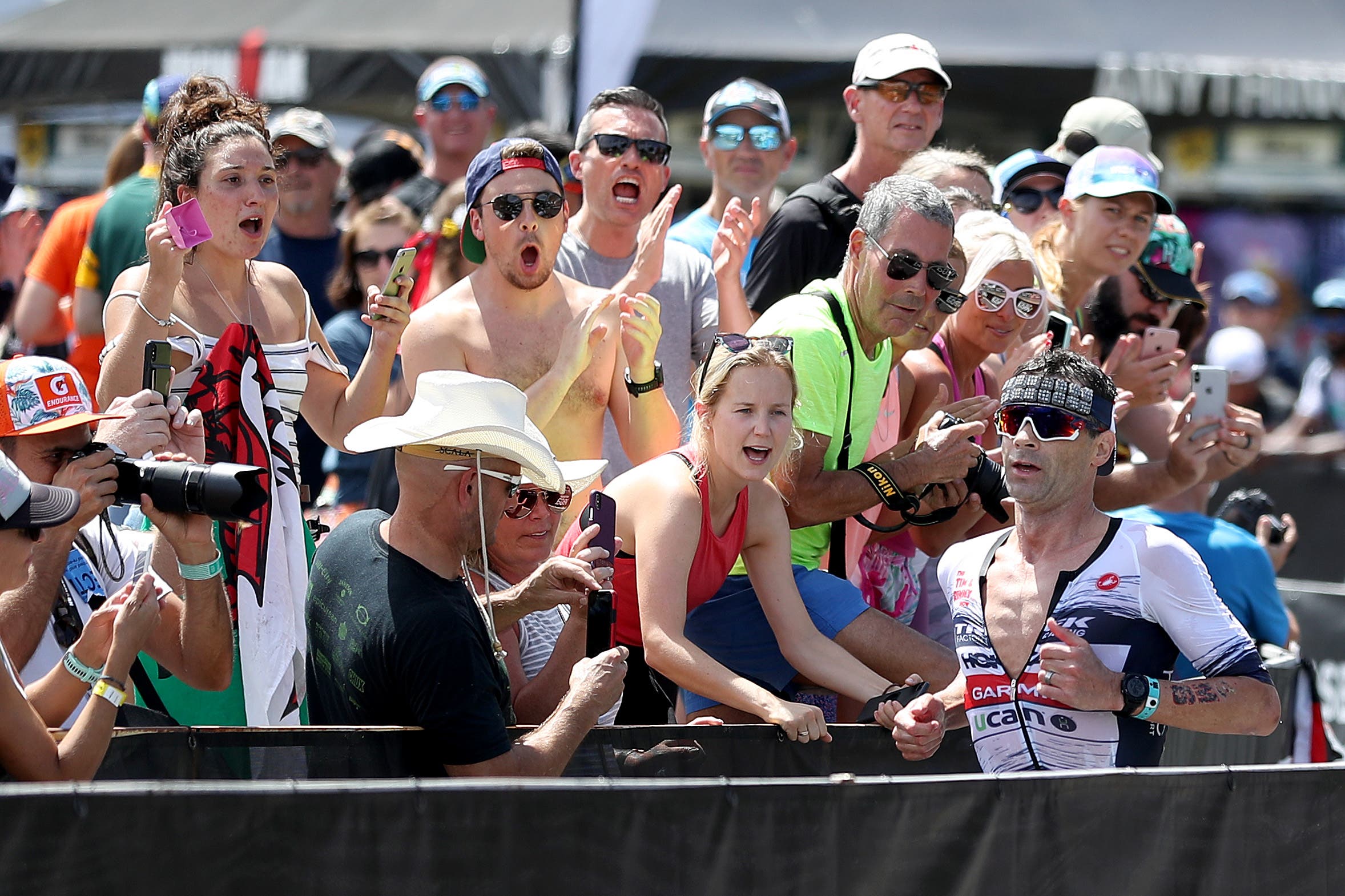Ironman World Championships 2022: Men’s Race Preview

(Photo: Sean M. Haffey/Getty Images)
After discussing the favorites for the men’s Kona 2022 race, let’s have a look how the race could develop and who is likely going to be where at different points in Saturday’s race.
The course will be the same as the women’s race two days before, but conditions could be incredibly different—especially if there’s some rain on or before one of the race days. The unpredictability of the winds, temperatures, and precipitation could mean totally different dynamics and times from Thursday to Saturday.
RELATED: How to Watch the 2022 Ironman World Championship Races
Ironman World Championship 2022 Men’s Race Preview: How It Could Play Out
The Swim

For the last three Kona races, Josh Amberger was the first out of the water, and it’s quite likely he’ll be leading the Kona 2022 swim as well. Sam Appleton could be another strong Aussie swimmer at the front of the field, and they’ll probably exit the water in under 50 minutes if the conditions are “normal.”
The “St. George Five”—the lead pack from the Ironman World Championships in May—consisted of Daniel Baekkegard, Kyle Smith, Braden Currie, Sam Laidlow, and Florian Angert. They could be with Josh and Sam or at most no more than a minute behind. There are a few more who have the swim potential to be in that group like Tim O’Donnell, Maurice Clavel, or Jesper Svensson. Will that lead to one bigger group of 10 to 15 athletes or many smaller groups a few seconds apart into T1?
Slightly further back will be a few strong contenders who won’t likely be in that first pack—at least not right out of the water. Patrick Lange is calculated to be about 80 seconds behind the lead but he’s often swam well in Kona – can he once more hold on to the feet of the front group as in Kona 2019? Kristian Blummenfelt and Magnus Ditlev should be about two and a half minutes back, while Gustav Iden might lose another 30 seconds, but it’s also possible he can swim with Blummenfelt which would simplify his bike tactics a bit.
The super strong bikers such as Cam Wurf, Sebastian Kienle, and Lionel Sanders are likely to swim around 53 minutes and should start their move towards the front with a deficit of four to four-and-a-half minutes to the front. Joe Skipper also often loses a fair amount of time in the swim—if he can join Wurf and the others on their way to the front, it would improve his chances for another good Kona result.
The Bike

There are two likely scenarios for the bike in Kona this year.
For most of the 2000s, there was a big lead group riding a solid pace at the front, the so-called “Hawi Express.” With 20 athletes or more in that group, it was often difficult to ride in a good position at the front while simultaneously avoiding the risk of a race-ending drafting penalty. At some point, a few athletes have typically fallen out of that group, as some pay the price for riding above their capabilities—but either you were able to stay in that group or you were pretty much out of the race. On the other hand, with this many athletes in the group, their pace wasn’t often quite as urgent and the stronger bikers were still able to make up ground to this big lead group, usually catching them before the turn in Hawi.
The second scenario is what we saw in Kona 2019 and also in St. George: A smaller lead pack that works well together and always has some athletes at the front interested in keeping the pace up. This makes it harder for the chase group to make up much ground. In Kona, you basically have until the turn at Hawi to catch the front group. If the swim gap is larger than maybe three minutes, it will become difficult to do that without taking too many risks. This also means that the athletes starting the bike after the lead group but ahead of the chase group will have to decide if they want to chase up to the lead or “wait” to be caught by the chase group and then ride with them behind the front group.
In St. George, Blummenfelt was on his own after the swim; he rode the second half of the bike with the chase group. In Kona 2022, there are a couple of strong bikers who might be willing to work their way to the front. Watch the athlete tracker closely to see what Robert Kallin, Ditlev, Iden, and Blummenfelt will do and who they are willing to take with them to the front—it may be more important to the final result than the swim-bikers dangling at the front. In Roth, Ditlev put in a huge effort early in the bike to shake Patrick Lange on his way to the front group with Jan Frodeno. Ditlev and Lange could also be next to each other in T1 in Kona.
Of course, the second part of the bike leg will be a continuation of the story that has been set up in the first half. If the chase group has caught up with the lead at about the turn in Hawi, look for the stronger bikers to ride away from the other athletes on the descent. If you’re motivated, there is still enough time left on the bike to put up to three to five minutes into the rest of the group before the start of the run.
Look for Wurf to take the lead into T2 once again. If Ditlev, Sanders, or Kallin have been able to ride to the front, they will also be interested in pushing the pace. It’s also likely that the Norwegians and the “St. George Five” will try to go with Wurf. If Blummenfelt can stay with the lead group, other strong runners are also forced to work hard to stay in the group. Is anyone confident enough to think he could run Blummenfelt down in the special Kona conditions?
If the chase group is not able to catch the front group by Hawi (the second scenario above) and the gap is still around two minutes, then it’s quite unlikely that they will be able to close the gap in the second half– at least that’s the way the Kona race has developed in recent years. After St. George, the front group will know that they probably need a gap of more than five minutes over the chase group. (Braden Currie was the best runner in the front group in St. George—he lost more than nine minutes to Blummenfelt and almost five minutes to Sanders.) Therefore, they should be keen to push the pace in the second half in order to increase the gap. But the pace will also be on in the chase group – there are going to be enough good runners in the group and the stronger bikers will want to at least have a head start so they can still contend for a top-five finish. Only the very best runners will be content to “just follow along” to save their legs for the marathon – and even they may want to get a small advantage on the other runners in the group.
The Run

When athletes climb Palani Road after the initial out-and-back on Ali’i Drive at roughly seven miles, there won’t be much left of any bike groups. By then, it will be clear who is having a good run day and if the bike leaders are losing time and are going to be caught. Look especially for Lange (run course record holder in Kona), Blummenfelt, and Iden – all of them are capable of running a sub-2:40, even in the Kona heat when in good form. With Ditlev, Sanders, and Currie there are more athletes who can ride well and then still run under 2:45. Are any of them in a good position after this first section of the run?
In addition to race at the front, also follow the tracker updates for what’s happening further back from the cameras. There will be some close racing as many athletes are searching for a coveted top-ten finish. A lot of time and places can be made up or lost in the second half of the run. Ben Hoffman and Chris Leiferman’s fourth places were the results of solid runs when others ran out of steam.
When athletes reach the Energy Lab, the list of contenders for the Kona crown is usually down to just two or three. Will Kristian Blummenfelt be able to post another fantastic run as in St. George? Will Gustav Iden continue his winning streak with his “lucky hat?” Will Magnus Ditlev show that his Roth win was more than “best of the rest” when Frodo DNF’d? Will Patrick Lange join the small group of three-time Kona winners? Could Braden Currie or Lionel Sanders become the first non-European winner in ten years? I’m pretty sure that we are going to see a new run course record – either that or an absolutely epic bike ride will be needed for the Kona 2022 title.
Can’t get enough Ironman World Championship coverage? Visit our Kona Hub for news, analysis, history, photo galleries, and so much more – new stories added daily from our team on the ground at the Big Island.
ABOUT THE AUTHOR: Thorsten Radde runs Trirating.com and is one of the top experts in the sport for analyzing triathlon finishes and results. His Kona Rating Report can be downloaded for free through his website.